Whether you’re checking out Spain’s fantastic culture, historic towns or stunning beaches, our tips will help you get there and back safely.
The promise of nearly year-round sun, a laidback lifestyle and cheap rioja appeal, and it’s also quite easy to get to Spain from the UK.
As well as flights from most major UK airports, you can catch a ferry from Portsmouth or Plymouth to either Santander or Bilbao. Just factor in extra time for your holiday – the ferry crossing can take 20-30 hours each way.
Taking your car means you can pack as much as you can fit in – you’re not limited to the airlines’ luggage allowance – and you’ve got the freedom to explore. You can stop off in as many small picturesque towns as you like, and go to places when it suits you.
- Driving in Spain requirements
- Checklist
- Rules for driving in Spain
- Speed limits
- Spanish road signs
- Low-emission zones
- Toll roads
- Electric car charging
- Parking
- Driving a UK car in Spain
- Towing
- Hiring a car
Driving in Spain requirements
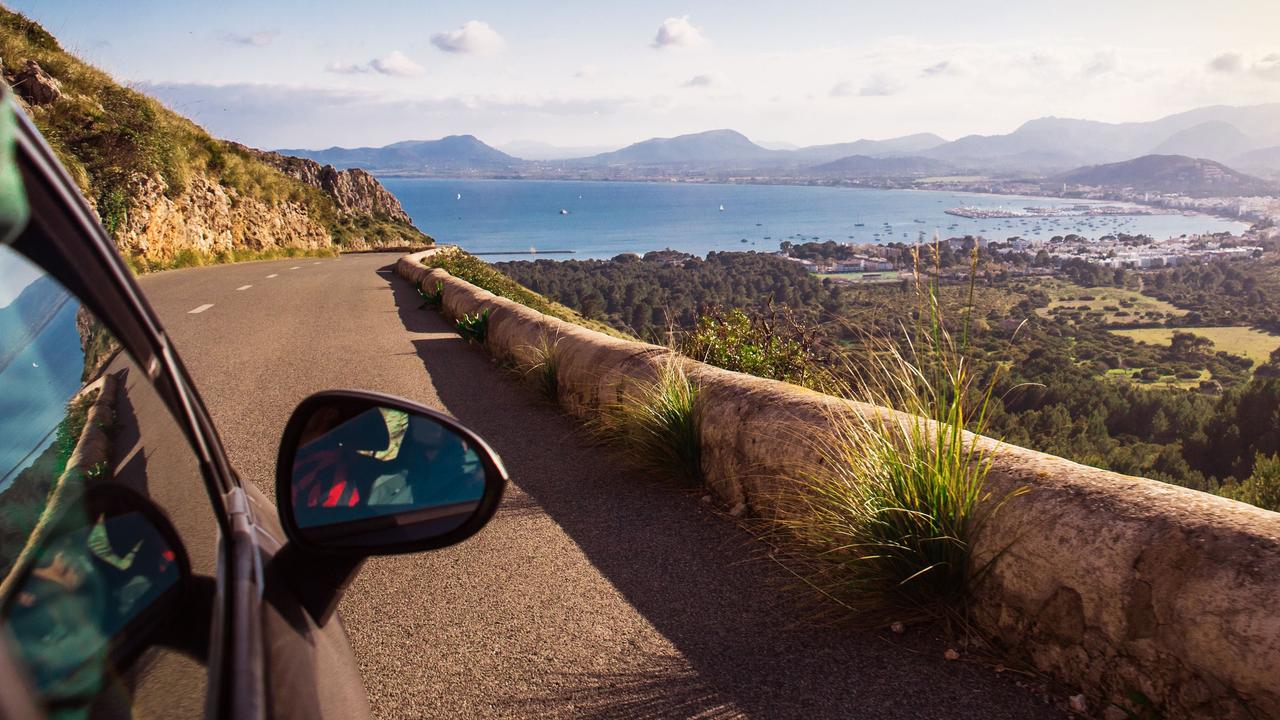
To drive in Spain as a UK citizen, you’ll need to take your passport, full UK driving licence as well as your V5C and proof of insurance – all of which needs to be valid and in-date. Unless your car has flat-beam headlights or fancy ones that can be adjusted in a settings menu, you’ll need to have headlamp deflectors on your car at all times to avoid dazzling other motorists. Remember to take them off as soon as you get back to the UK.
You must be over 18 to drive a car in Spain, or over 16 to ride a motorcycle with an engine no more than 125cc in size.
Motorcyclists and their passengers must wear a helmet, unless the bike has seatbelts, and motorbikes being ridden on the road need their lights on at all times. The same goes for trikes and quad bikes.
Even if you have a UK identifier on your numberplate, you’ll still need a UK sticker visible.
If you’re planning to stay in Spain for more than six months consecutively, you’ll need to take a Spanish driving test. Older drivers living in Spain have to undergo medical checkups every five years to make sure they’re still able to drive.
UK residents do not need an International Driving Permit (IDP) or insurance green card to travel to Spain.
Checklist
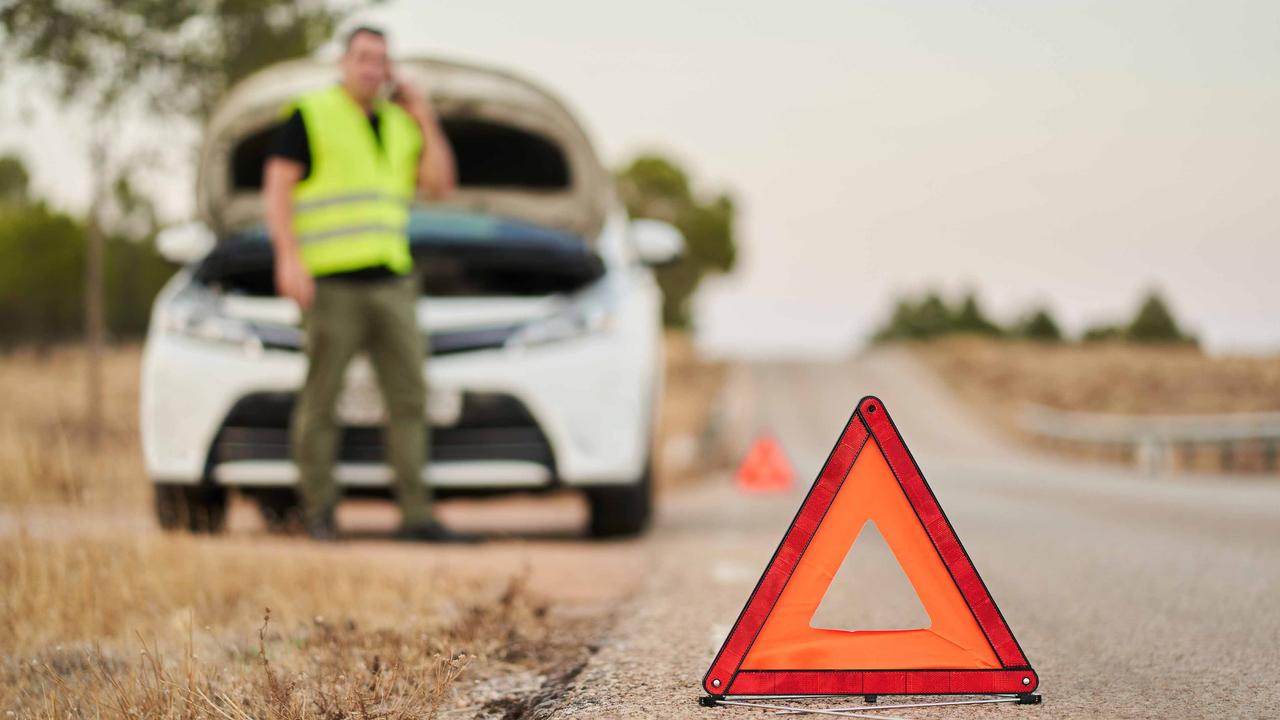
Here’s what you need to drive in Spain:
- Passport (valid and in-date)
- Full driver’s licence (valid and in-date)
- UK car sticker – even if you’ve got a UK identifier on your number plate. GB stickers are no longer valid
- Proof of insurance
- V5C logbook (if applicable)
- A warning triangle in case you break down (two if you’re towing)
- Headlamp beam deflectors (if needed)
- A high-vis jacket for everyone in the car
Recommended items for driving in Spain:
- European breakdown cover
- Spare bulbs (unless your car’s lights are in sealed clusters)
- First aid kit
- Up-to-date road atlas (especially if travelling in rural areas with limited GPS signal)
Rules for driving in Spain

You must drive on the right in Spain unless a sign explicitly tells you otherwise.
Overtaking, where permitted, is done on the left. Remember to stay in the right lane on motorways and dual carriageways when you’re not overtaking slower traffic.
Where possible, vehicles longer than 10 metres and weighing more than 3.5 tonnes need to keep at least 50 metres from the vehicle in front – which you’ll need to bear in mind when overtaking a lorry, for example.
Give way to emergency services vehicles when their lights are flashing as long as it’s safe for you to do so – as you would in the UK.
You must wear seatbelts if they are fitted, and children aged 12+ don’t have to use a child seat once they’re at least 135cm tall.
It’s legal to use speed camera detectors – such as on your sat nav or on Google Maps. Radar jammers to block speed cameras are banned, however – and you could be fined up to €6,000 if you’re caught with one.
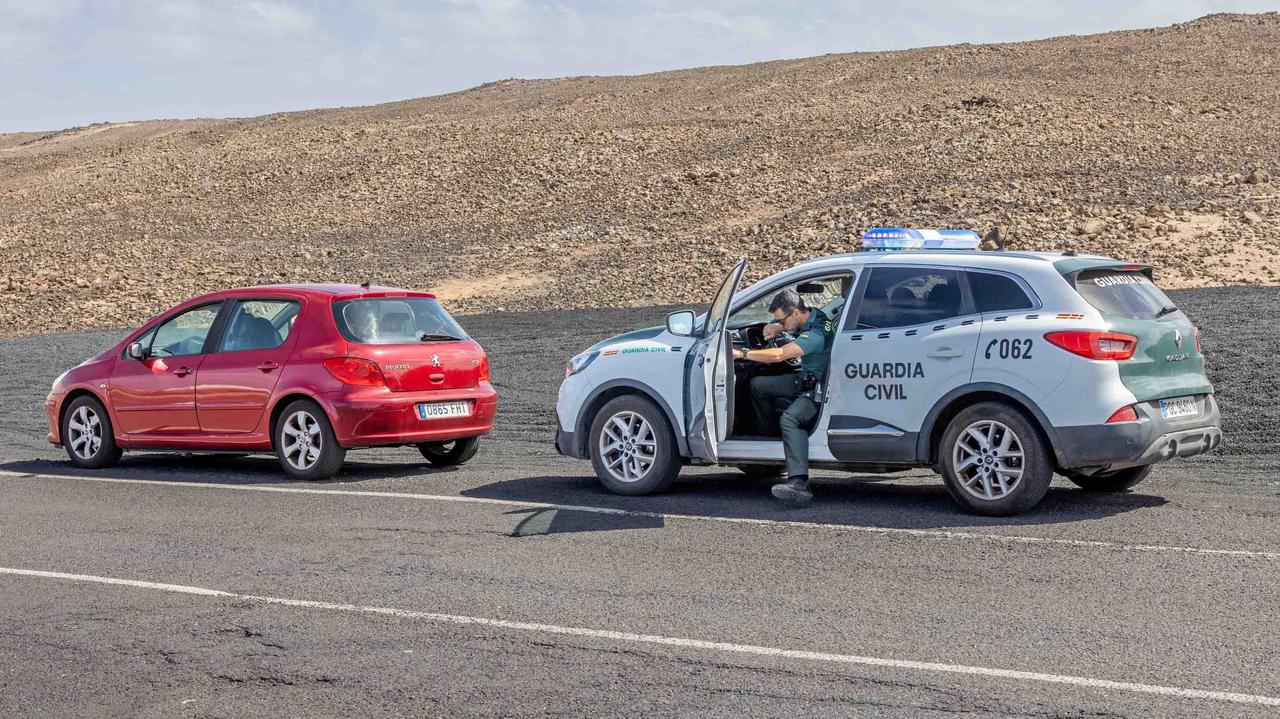
As you might expect, it’s also illegal to use a handheld phone or similar device while driving. This extends to headphones or in-ear Bluetooth devices – you could be fined €200.
Motorists from outside Spain are required to pay any fines incurred on the spot. You should be able to pay by credit/debit card. If you can’t or don’t pay the fine, your vehicle can be confiscated until the money owed is paid. Vehicle confiscation can also occur if your car has mechanical defects, excess noise or exhaust emissions, if you don’t have insurance or if you’re caught drink-driving.
Speaking of which, the drink-drive limit in Spain is lower than it is in most of the UK – 50 milligrams of alcohol per 100 millilitres of blood. We’d advise sticking to alcohol-free options if you’re going to be driving in Spain. The blood alcohol limit is lower still if you’re a new driver or are in Spain to drive professionally.
Sounding your horn is only to be done in an emergency.
Speed limits
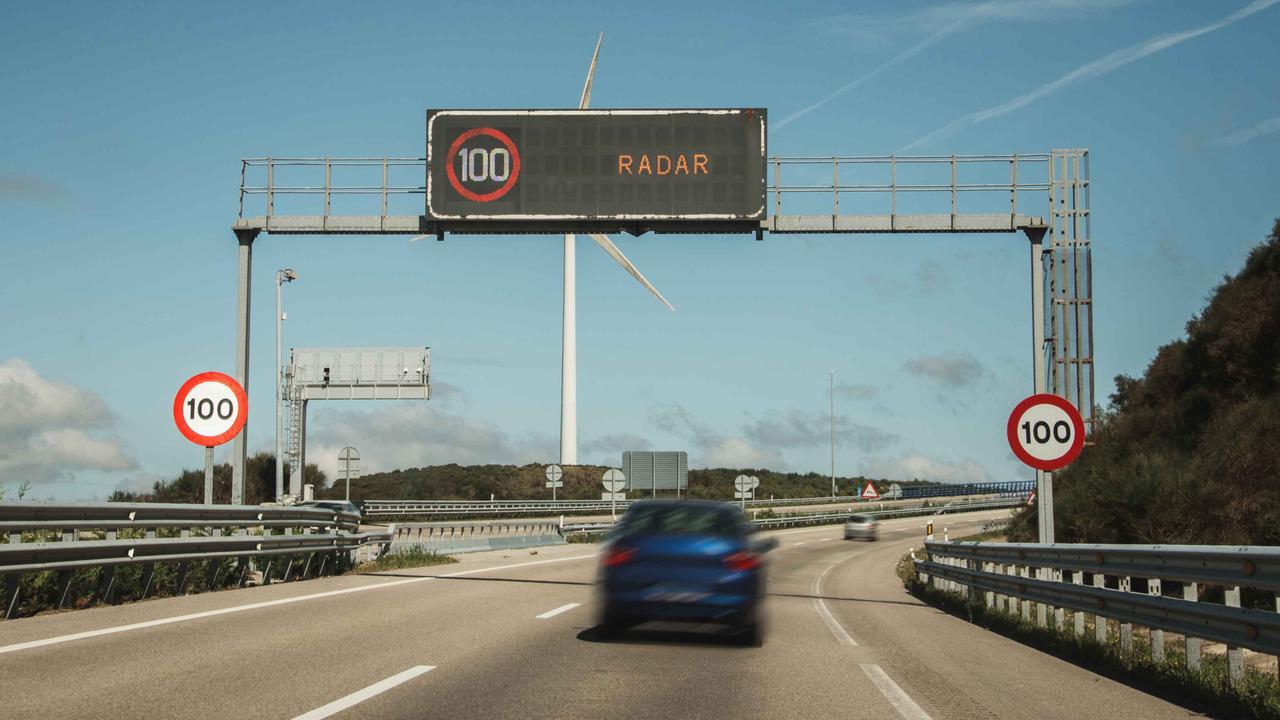
The speed limits in Spain broadly match those in the UK, although speeds are measured in kilometres per hour (km/h) rather than miles per hour.
In built-up areas, the speed limit is usually 20-50km/h (12-30mph). On out-of-town roads, the speed limit is likely to be 90km/h (56mph). On dual carriageways and motorways, the speed limit is likely to be 120km/h (74mph).
Spanish road signs
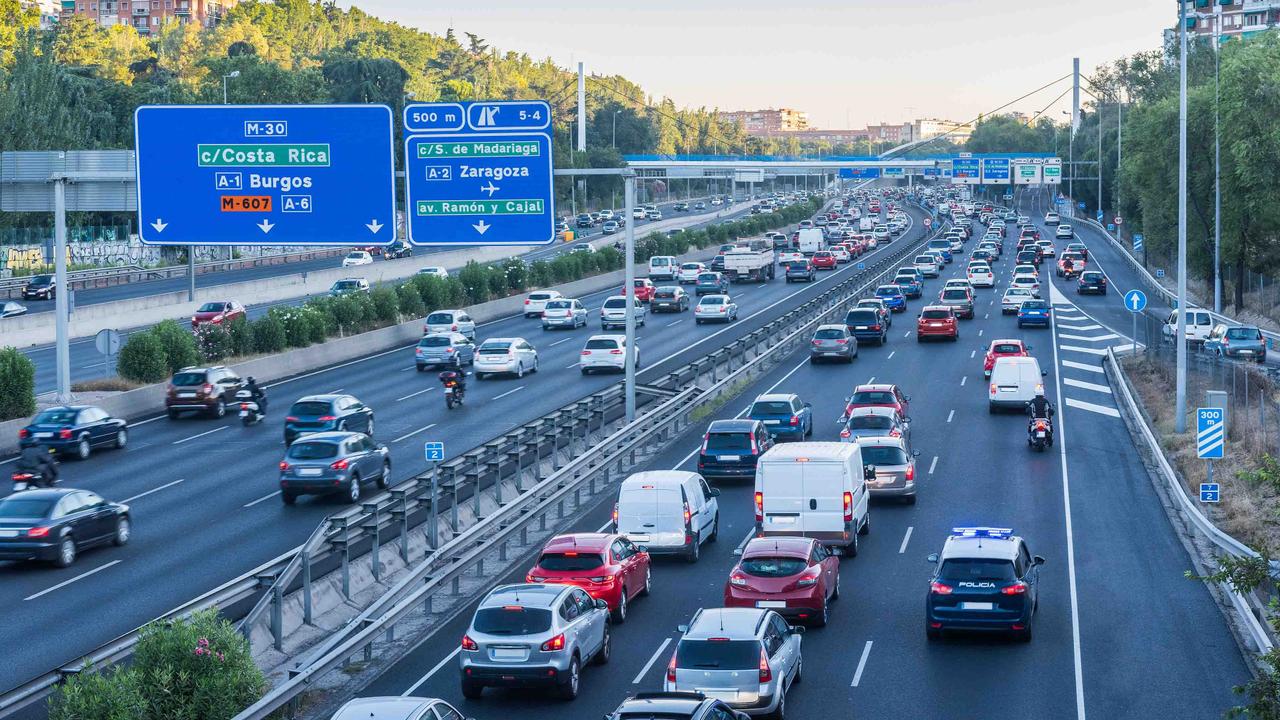
Spanish road signs are largely the same as the ones you’ll find in the UK, albeit with some minor differences.
An exclamation mark inside a red triangle warning sign means ‘cars prohibited’. A black X inside a red triangle means there’s an uncontrolled crossroad ahead. A black horizontal line in a red circle means there’s a toll booth or a police checkpoint ahead. Like in France, there are yellow and white diamond signs to show who has priority.
Some Spanish bloggers report that major roads are well signposted, but the quality and quantity of signage can vary in more rural areas.
Distances are measured in kilometres and metres.
| Spanish road signs you may come across | English translation |
| Peaje/Peaxe/Peatge | Tolls ahead |
| Autovía | Dual carriageway |
| Tramo de concentración de accidentes | Drive carefully – this area has had lots of accidents in a period of time |
| Lugo | Diversion |
Low-emission zones
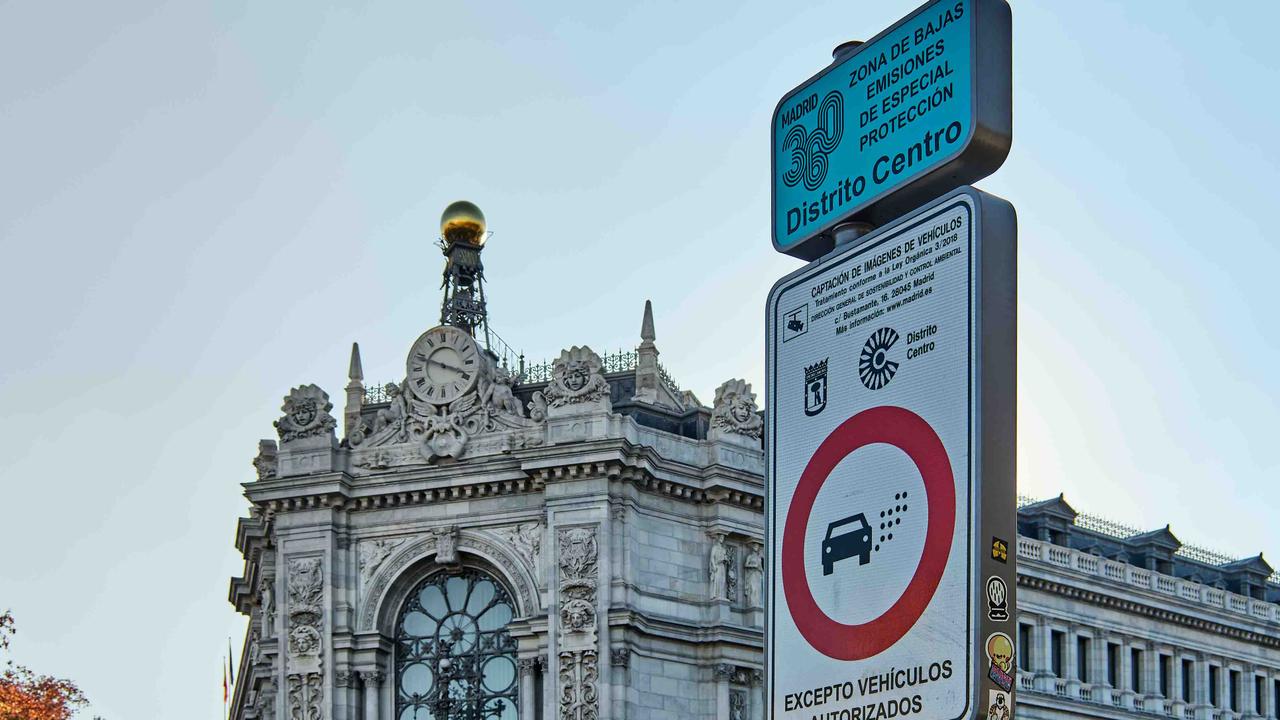
Spain has low-emission zones called Zonas de Bajas Emisiones (ZBEs). Ones in Barcelona and Madrid have been active for some time, while plans are in place to extend ZBEs to any area with more than 50,000 residents.
Most of the time, ZBEs are open to petrol cars registered since 2006 and diesel cars registered since 2015 – which is similar to London’s ULEZ and other UK Clean Air Zones (CAZs).
A sticker system, similar to France’s Crit’Air system, is in place. Blue stickers are for the lowest-polluting cars (EVs and hybrids with more than 40km of electric range), green is for slightly less efficient vehicles and yellow is for older petrol and diesel cars. Green and yellow stickers may be allowed into some ZBEs but not others.
It’s thought that half of the cars on Spain’s roads don’t qualify for a sticker because they’re too old or too highly polluting – and that means they’re banned completely from ZBEs.
Foreign-plated cars – such as UK-registered cars – may need to display a ZBE sticker, depending on the zone in question. As they’re available from Spanish Post Offices (Correos) for around €5, it could be worth getting one just to be on the safe side.
Toll roads in Spain
Some motorways in Spain are toll roads. Toll charge amounts vary, but tolls can be paid with cash or credit card. If you are regularly driving on Spanish toll roads, there’s a Telepeaje system that automatically scans a device in the car and lets you go through without queuing up.
All main roads with an ‘E’ prefix are toll-free – but be aware that they might be busier than the toll road network.
Electric car charging in Spain
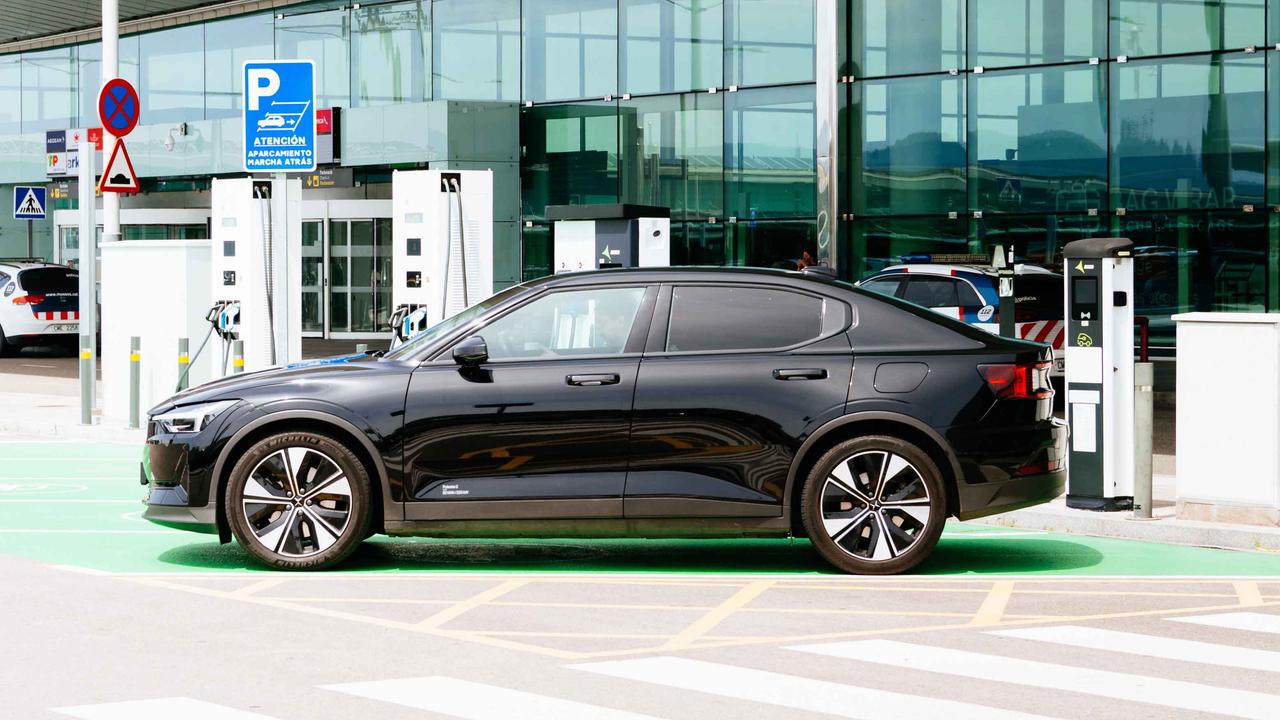
Driving an electric car in Spain should be easy enough as long as you plan ahead. Most small towns have at least a couple of electric car charging points, and they’re more widely available in highly populated areas. At the time of writing, both Madrid and Barcelona have around 900 EV chargepoints throughout each city.
Remember that high speeds and using the air conditioning can noticeably affect your range. Read our guide to planning long journeys in an electric car for more info.
Parking in Spain
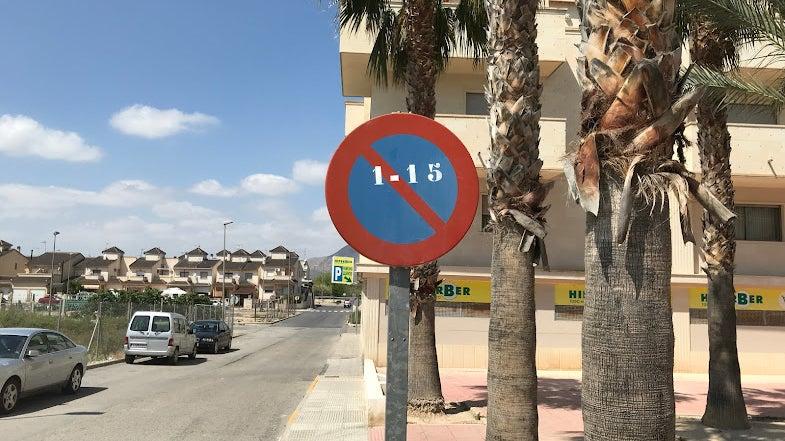
Parking in Spain may initially seem confusing.
Look for white-lined parking zones for free parking, while blue-lined areas are chargeable. Red and orange-lined areas are generally for residents only, although some may let you park there for a small amount of time. Yellow means no parking whatsoever.
Make sure to look out for red circle signs with a blue background and diagonal slash. These mean no parking on odd days, or no parking on even days – and numbered ones show you what days you can park there.
It’s worth researching the exact areas you’ll be parking in, as some cities and towns may have parking restrictions that change throughout the week.
Driving a UK car in Spain
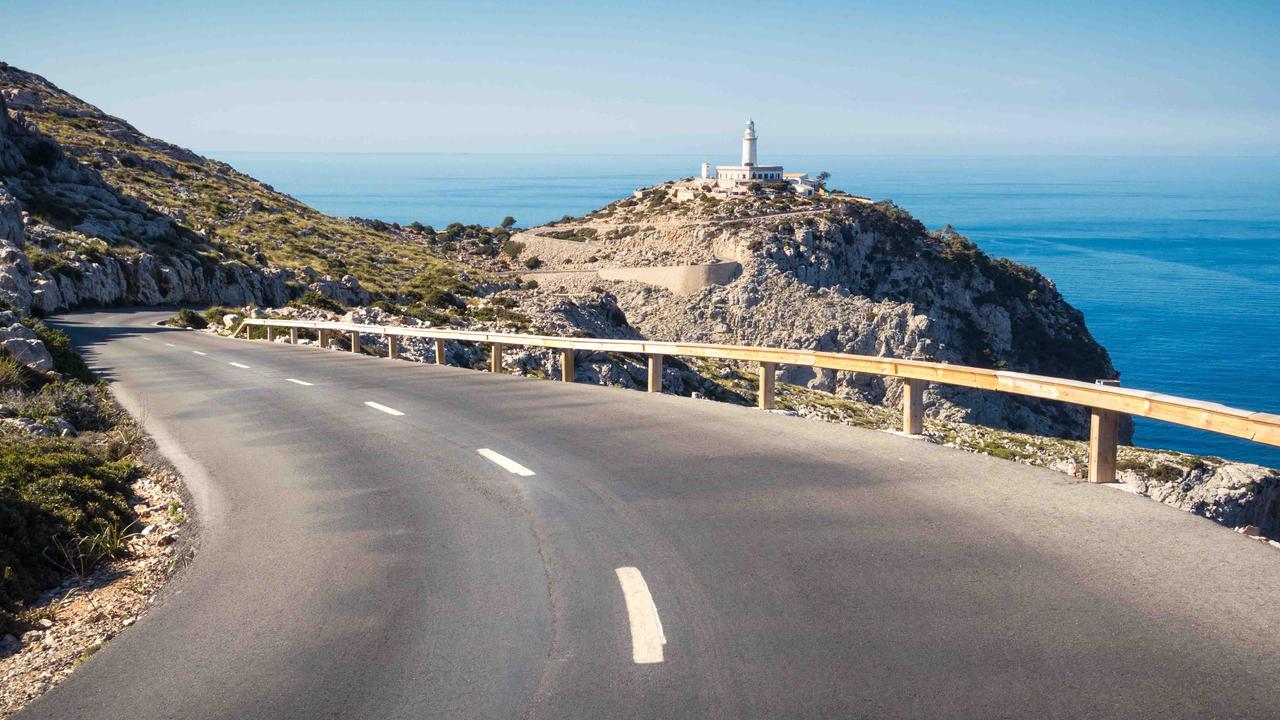
Remember that driving a right-hand-drive car on the right-hand-side of the road can be a little more difficult than driving in the UK.
Your blind spots may be different to a left-hand-drive car – especially at awkward junctions – and all toll booths, drive-thrus and car park machines will be on the left-hand side. Roundabouts and intersections are the other way around to what we’re used to. Overtakes are going to be very difficult away from dual carriageways and motorways.
Petrol stations on larger roads are easy to find, although they’re less common on rural roads. Manned petrol stations may close for a lengthy lunch break, and all day on Sundays.
Be careful when entering a dual carriageway or motorway – Spanish drivers may not move over to let you on to the larger road.
A large group of cyclists is considered to be a vehicle, so the whole group will have priority at times when you need to give way.
Towing in Spain

Campervans, or caravan-and-car combinations, that exceed 12 metres in length need two yellow-and-red reflectors on the back. The overall length of your car and caravan can’t be more than 18.75 metres, while the height restriction is 4m and the maximum width is 2.55 metres.
Speed limits are slightly lower for motorhomes and caravans than for cars. If you’re towing a caravan, you’ll need to stick to 80km/h (50mph) on the motorway
A-frames should not be used for towing a car behind a campervan abroad – you should tow the car on a trailer instead.
Hiring a car in Spain
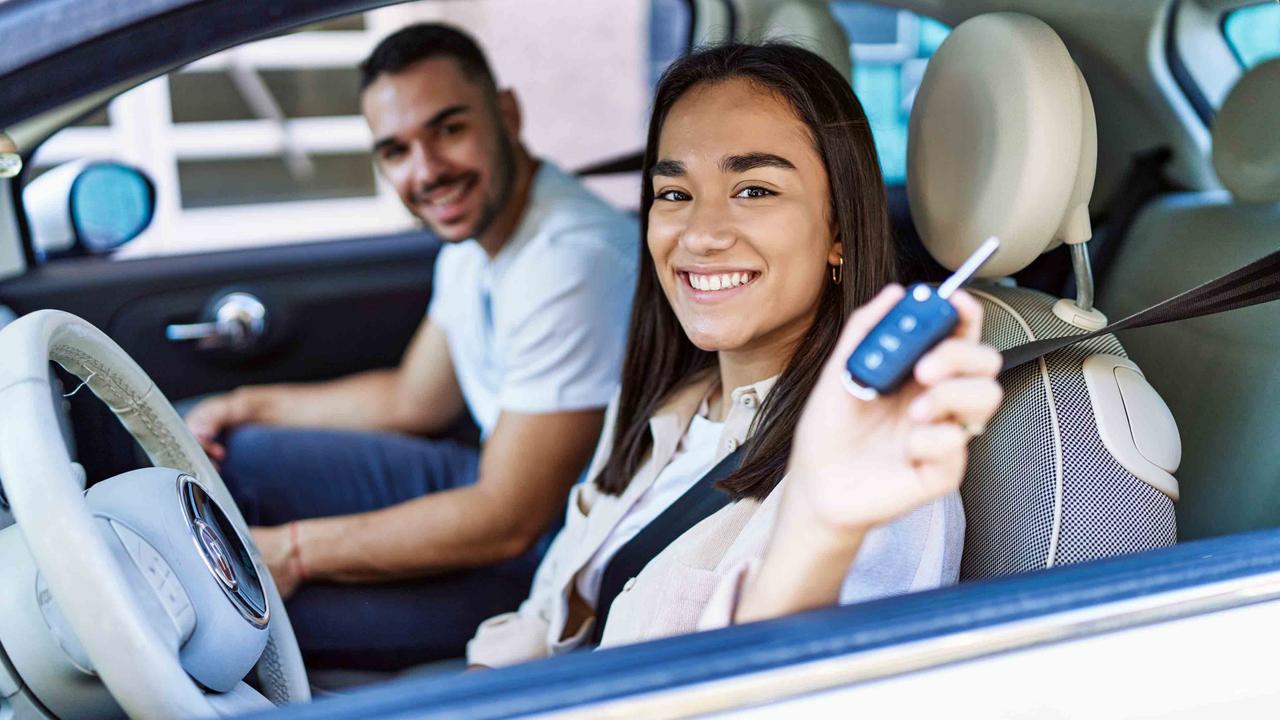
You must be over 21 years old to hire a car in Spain, although car-hire companies might stipulate that you need to be over 25 years old. You’ll need your passport and a full driving licence to hire a car, and you’ll need to have held your licence for at least a year. Expect to pay a deposit on your credit card.
If you’re planning to hire a car in Spain and drive it in other countries, make sure to check that that’s okay with the hire company ahead of time. As is common, manual hire cars will be cheaper than automatic ones.
You’ll be pressured to take out car hire excess insurance. Get this before you travel – it’ll be much cheaper than at the hire desk.
If you’re going to be driving a hire car in Spain with young children, it’s better to take your own child seats if possible. Make sure they’re well packaged if you’re flying as they’ll be chucked into the hold. You won’t know the availability and condition of any child seats at the hire car firm, and they’ll be expensive add-ons.































.jpg&w=1440&q=75)



